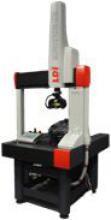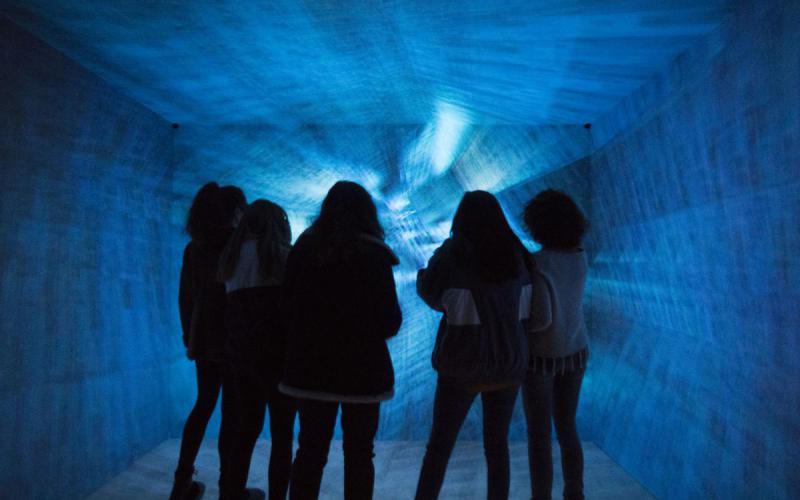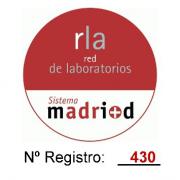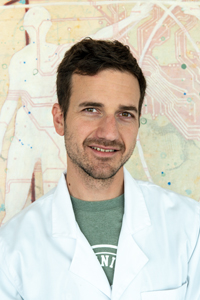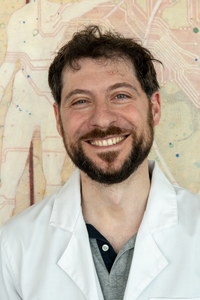- Labs REDLAB-CAM
- Virtual Reality and Augmented Reality Laboratory
Virtual Reality and Augmented Reality Laboratory
Virtual Reality and Augmented Reality Laboratory

The main activity of this laboratory is the development of tools, visualisation environments and applications based on Virtual Reality, Augmented and Mixed Reality, tracking and natural interaction, computer vision techniques and visual analytics of large amount of data for the resolution of problems and technological challenges. The most important areas of application are security and surveillance; automation and personal assistance in intelligent environments; surgery and legal and forensic medicine; architecture and urban planning and the visualisation and analysis of large volumes of data to support decision taking on a broad scale (e.g. Smart Cities).
|
The facilities and techniques offered are included in the CAM (Comunidad Autónoma de Madrid) Infrastructures Network of Laboratories with registry number 430. |
More information available HERE
The application sector of Virtual Reality, Augmented Reality and Visual Analysis techniques is very large, as they deal with quite transversal technologies.
VIRTUAL REALITY
The Virtual Reality (VR) concept makes reference to any digital environment created by a computer where it is possible to simulate physical situations of the real world, as well as imaginary worlds. The amount of presence inside a virtual environment is directly related to the degree of immersion of our senses. To achieve this goal, VR makes use of computer stereoscopic graphics in real time presented through different kind of displays (e.g. Head Mounted Displays or HMDs, large dimension stereoscopic screens or StereoWalls, multiple screens like a CAVETM system, etc.), tracking systems to monitor one or several users and sensorial haptic devices. In the Virtual Reality laboratory of CeDInt, our work is focused on the generation of realistic 3D content and applications that helps the user to feel immersed with the environment shown. We see Virtual Reality like a technological asset not only for visualisation and simulations of experiences but also as a great tool to provide solutions to everyday problems in real life. With this idea in mind, our projects have as one of its main objectives to detect and deal with those problems such as the development of a tool to reconstruct soft facial tissues or a system to monitor controlled environments to support decision taking. The most important areas of application are: Design, modelling and visualisation of objects and places of interest such as buildings, environments, industrial products, prototypes, etc.; Reconstruction and virtual visits to real historical places and cultural heritage; Visualisation of complex data and simulation of processes; Training and education of people in a collaborative way in order to tackle complex and/or dangerous situations; Scientific research in medicine through the simulation of real life conditions and the study of the behaviour of users in a practical and controlled environment.
AUGMENTED REALITY
The main goal of Augmented Reality (AR) is the seamless integration of digital content with the image that users perceive from the real world. Literally speaking, it consists in the addition of information of interest over the surrounding environment. In contrast to Virtual Reality, AR does not simulate a real world experience. It uses the real physical space as a base to add contextual data in order to enrich the knowledge of the user about the environment. The most frequent example and one of the first commercial application of this technology was the insertion of the offside line in TV broadcasted football matches. In CeDInt, we work with Augmented Reality showing contents using personal mobile devices (e.g tablets or smartphones), in order to create experiences in which the user gets the information in a useful and original way. This technique provides a development framework for the study and research in a great list of areas such as entertainment, military training, engineering design, robotics, manufacturing and other industries. The most important areas of application of AR are: Location of users in unknown environments, using algorithms from the robotics sector, like SLAM and PTAM; Presentation of contextual information over the environment geometry; Provision of interactive contents, supporting the learning processes; Support to decision taking inside the industrial prototyping phase or visualisation of processes before the final stages of the project; Assistance to the accomplishment of complex assembling tasks, maintenance or surgery; Visualisation of construction projects in the early stages.
COMPUTER VISON
It is a branch of Artificial Intelligence that comprises the set of techniques that a machine uses to recognise the structure and properties of images as they are seen by humans. To achieve this goal, Computer Vision uses, among others, image processing techniques, pattern recognition, statistical learning and graph theories. In the Virtual Reality laboratory in CeDInt, we use computer vision to support the lines of Virtual Reality and Augmented Reality. Using this technology, we process the images captured by cameras and other video sources to provide the necessary data to the final applications, for example the detection of a certain object or the depth computation of objects in the scene in order to be able to interact with them. Among the most important techniques that we usually work in our projects we can find: Segmentation; Feature extraction, Stereo-matching; Facial recognition; Reconstruction of environments.
VISUAL ANALYSIS OF INFORMATION
The resolution of problems, in the academic and the business sector, is directly related to how the data is analysed and shown to the final users. In the era of data explosion that we live, this can have catastrophic consequences if researches do not have the tools and appropriate methodologies to make easier its understanding. These reasons have made the visualisation of information and visual analytics extraordinary active research areas in the recent years. The first has as its main objective the visual representation of abstract information in a comprehensive and useful way to the user; the second reinforces the human skill to reason and understand complex and dynamic scenarios though the perception mechanisms. The final goal of both is the acquisition and extraction of knowledge from raw data though interactive visual metaphors. Nowadays, the projects of CeDInt in this area tackle the following topics: Representation of Geospatial information; Temporal analysis (line of time) of data; Complex pattern understanding in urban areas; Data indicators representation using Virtual and/or Augmented Reality environments.
The main infrastructure of the Virtual Reality and Augmented Reality laboratory in CeDInt is a stereoscopic projection CAVETM system (Cave Automatic Virtual Environment). It is basically a 3D immersive visualisation system in which the illusion of immersion is achieved using a stereo rear projection technology called Active Infitec®+ though five screens of great dimensions, arranged perpendicularly to simulate a cube in which the user is completely surrounded. Besides, the laboratory has an advanced back projection system (3D PowerWall) with capacity for 30 people and a portable Virtual Reality system comprising an assembling screen and two DLP projectors
Location
The dependencies of the laboratories are located in the Centre of Energy Efficiency (Centro de Domótica Integral) in the Campus of Montegancedo.
More information HERE
Contact telephone
CeDInt concierge’s office: +34 910679600
Contact email
Scientific responsible
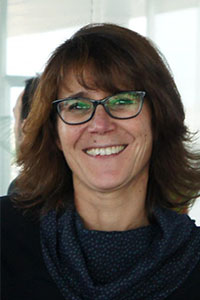
Technical responsible/s
|
|
|
Projects of interest
|
Description |
Projects |
Links of interest |
|
Visual Analysis of data for the acquisition and extraction of knowledge
|
|
|
|
Application of computer vision techniques to support Virtual Reality and Augmented Reality |
|
|
|
Support for the resolution of complex tasks for the assembly, maintenance and surgery. |
|
|
|
Understanding of complex data patterns (urban, bank, traffic, cellular telephony, energy consumption, etc.) |
PRIVATE |
|
|
Design, modelling and visualisation of objects and places of interest such as buildings, environments, industrial products, prototypes, etc. |
|
|
|
Training and education of people in a collaborative way to tackle complex and /or dangerous situations. |
|
|
|
Scientific research in medicine through the virtual reconstruction of real life scenarios.
|
CRANEO project award computer world
|
|
|
Location of users in unknown environments, using algorithms from the robotic sector, such as SLAM and PTAM.
|
|
|
|
Provision of interactive content, aiding the process of learning. |
||
|
Reconstruction and virtual visits of real historical places and cultural heritage.
|
||
|
Visualisation of contextual information over the real geometry of the scenario.
|
|
|
|
Representation o data indicators using Virtual Reality and/or Augmented Reality environments.
|
|
|
|
Support to decision taking in the industrial prototyping phase or visualisation of processes before the final stages of the project. |
|
|
|
Visualisation of complex data and simulation of models.
|
PRIVATE |
CeDInt counts on an advanced back proyection wall with capacity for 30 people and the following caracteristics:
3D PowerWall®
- 1 rear projection screen (3.0x2.4m).
- 2 projectors for stereoscopic visualization BARCO IQ R400, with native resolution 2500 lumens.
- 1 Workstation HP xw9300 with 2 CPUs AMD Opteron 252 2,6, 4GB of RAM DDR-400 ECC, 1 HDD U320 SCSI of 146GB, 15K, network card Broadcom 5751 Gigabit, graphics card nVidia Quadro FX4500 PCI-Express 512MB and S.OR. MS Windows XP Professional 64 bits.
- Virtools software for VR applications development and presentation
More information here
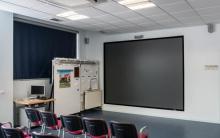
CeDInt counts with an i-SPACE® infrastructure, a Cave Automated Virtual Environment of 5 rear projection screens arranged in CUBE (three walls, floor and ceiling) and which, in combination with the Stereo Active Infitec + projection technology, provide an advanced fully immersive 3D visualization experience.
The CAVE® infrastructure comprises the following components:
- 5 multichannel rear-projection screens: frontal + 2 lateral + ceiling + floor (4:3 format, 3,20 x 2,40 m.).
- 5 high resolution 3D projectors / video systems, 3D BARCO Galaxy 12 HB+ with DLPTM technology, native resolution SXGA+, 12000 ANSI lumens of brightness and contrast.
- 6 HPxw9400 workstation in cluster configuration with: 2 AMD Opteron 2220SE, 2.8MHz, 1MB of cache, 8GB ECC DDR2 667MHz RAM, 300GB HDD SAS 3Gb / s 10K rpm, Graphics Card nVidia Quadro FX5600 PCIe with 1.5GB of memory, DVD + /-RW 16x LightScribe, Intel PRO/1000 network card GT, 1Gibabit, Card SB X-Fi audio ExtremeAudio and Operating System Microsoft Windows XP Pro x64-bit.
- Tracking System and interaction devices: stereoscopic glasses Infitec ® deLuxe, Flystick for first person navigation, ARTtracking optical tracking with 6 degrees of freedom (position and orientation), four cameras equipped with CCD image sensors operating in the spectrum of near infrared light and two reference systems.
- Surrounding audio system based on technology 5.1.
- Virtual environment development platform.
More information here
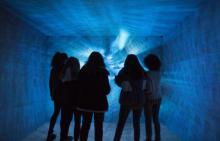
In the Virtual Reality and Augmented Reality Lab we have two Wacom Cintiq 22 graphic tablets with Interactive Creative Monitor, Adjustable Support, 1920 x 1080 Full HD Resolution, Wacom Pro Pen 2 Digital Pencil, Compatible with Windows and Mac ideal for Illustration and drawing on Screen and two other Wacom Intuos S, which allows us to perform an accurate 3D modeling of elements for future inclusion in Virtual Reality and Augmented Reality projects.
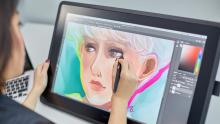
The use of the Augmented Reality technique in CeDInt has a great role in our laboratory. Therefore, for better performance and resolution when using this technique, we have two high performance Tablets:
- 1 iPad Pro de 10,5", 64 GB, Wi-Fi
- 1 Samsung Galaxy Tab S4 (10.5" WQXGA, Wi-Fi, Procesador Octa-Core Snapdragon 835, 4 GB de RAM, 64 GB de memoria interna, Android 8.1 Oreo)
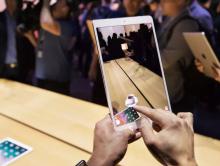
In the Virtual Reality and Augmented Reality Laboratory of CeDInt we have a wide range of computers and laptops for higher performance in 3D modeling and texturing tasks, creation of multimedia virtual spaces, programming and audiovisual content creation among other tasks. We also have several software licenses such as Adobe Suite, Substance, Autodesk...
- 4 HP OMEN 17-CB1003NS Intel Core i7-10750H/16GB/1TB SSD/RTX 2060/17.3"
- 1 HP OMEN 15-DC1001NS Intel Core i7-8750H/16GB/1TB+256GB SSD/RTX 2070/15.6"
- 1 WorkStation III Intel Core i7-9700K/32GB/2TB+500GB SSD/RTX2060S
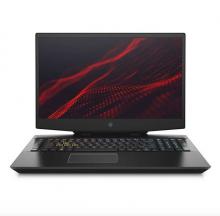
These VR Head Mounted Displays are equipped with a tracking system that allow to experience immersive environments adapted to the user in any place.
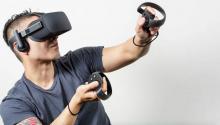
The Portable VR System, allow us to take VR demos to congresses, exhibitions or to the customer site. Ir consists of:
- 1 rear projection screen (2.4m x 1.8m, 120") with rigid frame and support for upright positioning.
- 2 DLP projectors with native resolution 1400x1050 (SXGA +), 2500 lumens, electronic active/passive conversion, specific support for placement and alignment and 2 linearly polarized filters integrated.
- Plastic and cardboard polarized eyeglasses.
- 1 Workstation HP xw9300 with 2 CPUs AMD Opteron 252 2,6, 4GB of RAM DDR-400 ECC, 1 HDD U320 SCSI of 146GB, 15K, network card Bro adcom 5751 Gigabit, graphics card nVidia Quadro FX4500 PCI-Express 512MB and S.OR. MS Windows XP Professional 64 bits.
More informatión here
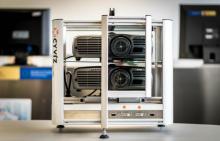
Manufacturing system by layers.
Special high resolution Plaster (resin) with color binder.
Allows impressions of objects in color with resolutions of 330 dpi in all three axes.
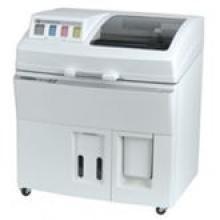
For parts of medium and small size (NextEngine Desktop 3D Scanner).
For smaller objects 20 cm diameter 3D profile is obtained to within 1 micron
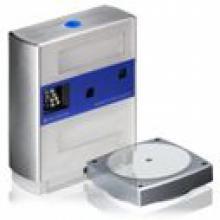
For objects of larger sizes.
It allows to scan ovjects larger than one meter in diameter with an accuracy of less than 10 microns.
